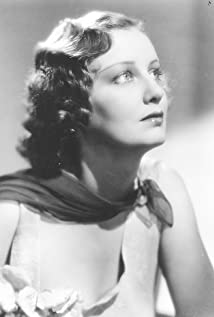The very pretty Judith Allen certainly had the makings of a great actress but her career fell far short, to the point that she came to be more sensational in the tabloid news than she was in the "B" films she graced.She was born Marie Elliot in New York City on February 8, 1911, of Scottish parentage, and raised in Belmont, Massachusetts....
Show more »
The very pretty Judith Allen certainly had the makings of a great actress but her career fell far short, to the point that she came to be more sensational in the tabloid news than she was in the "B" films she graced.She was born Marie Elliot in New York City on February 8, 1911, of Scottish parentage, and raised in Belmont, Massachusetts. She began studying theatre at the Leland Powers School in Boston following high school graduation, but this was interrupted when, at the age of 19, she married pro wrestler Gus Sonnenberg (aka "The Goat"). The marriage went sour almost immediately and she quickly returned to the dramatic school and picked up where she left off. Following this she joined up with a stock company that toured the New England area and changed her name to the more attractive spelling and sounding Mari Colman.Paramount took notice of "Mari" and signed her to a contract following a screen test. Cecil B. DeMille cast her in the virginal leading lady role opposite Charles Bickford and Richard Cromwell in Triomphe de la jeunesse (1933), not knowing that the newcomer was already married, which had been a prerequisite for him casting her. Judith kept her faltering marriage a secret from DeMille and the studio.During shooting, DeMille took it upon himself to change her marquee name to "Judith Allen." Meanwhile, jealous, estranged husband Sonnenberg broke Judith's marriage cover by blabbing to reporters just before the film's opening, to the fury of DeMille. Surprisingly, DeMille did not retaliate against Judith and she continued her Paramount career. The crimer has since reached minor cult status.A beautiful and talented Depression-era co-star for Paramount and a lovely loanout to other studios in both drama and comedy, Judith went on to appear opposite Randolph Scott in The Thundering Herd (1933); Bing Crosby in the musical Too Much Harmony (1933) (in which she sang the song "The Day You Came Along"); Richard Arlen in Hell and High Water (1933); Reginald Denny in Dancing Man (1934); Tom Brown in The Witching Hour (1934); Johnny Mack Brown in Marrying Widows (1934); William Haines in Young and Beautiful (1934); and Bruce Cabot in both Les ecumeurs de la nuit (1934) and Night Alarm (1934). Her best remembered film roles of that period were in the W.C. Fields classic La Parade du rire (1934), as Fields' daughter, and the Shirley Temple vehicle Shirley aviatrice (1934) opposite James Dunn. Judith was also reunited with Crosby in the musical She Loves Me Not (1934) but Kitty Carlisle was his musical co-star and Judith appeared in support way down in the credits.Following her divorce, Judith married Irish boxer Jack Doyle, aka "The Gorgeous Gael," in April of 1935 and her career became, naturally, a second priority. A boxing loss to Buddy Baer in August of that year at Madison Square Garden severely damaged Doyle's worldwide reputation. He later tried to focus on a singing career with Allen, touring in vaudeville shows. They were not welcomed when they arrived in Ireland to perform. These upsets triggered an on-again, off-again relationship which made for great tabloid fodder. The couple did co-star together in the film Navy Spy (1937), but it was too late and they eventually split up for good.Trying to regain some late 30s film momentum, Judith was now solidly trapped in second-string programmers with roles opposite "B" actors Norman Foster, Regis Toomey, William Boyd, Donald Cook, Gene Autry', Harry Carey, Grant Withers and Dick Purcell for Republic Pictures and its "Poverty Row" subsidiaries such as Mascot, Monogram and Winchester. By the end of the decade her leading lady career had all but vanished and she was appearing unbilled in such pictures as Four Girls in White (1939) and the classic Femmes (1939).Into the 1940s, Judith found work on radio, on stage, in vaudeville and in nightclubs. To supplement her income, she also sold life insurance. A rare film would come her way in the 40s and 50s, including one lead role in Train to Tombstone (1950), but it was extremely rare. She married a third time, to publisher Rudolph Field in 1941, but the breakup was nasty and it too hit the tabloid papers while they went through the throes of divorce.By 1951, Judith had abandoned the limelight. A fourth marriage would also end in divorce and she suffered a nervous breakdown following the death of her mother. In later years she joined the Mentalphysics Spiritual Teaching and Retreat Center in Joshua Tree, California (Palm Springs area) and eventually became an ordained minister. She died at age 85 in Joshua Tree.
Show less «



